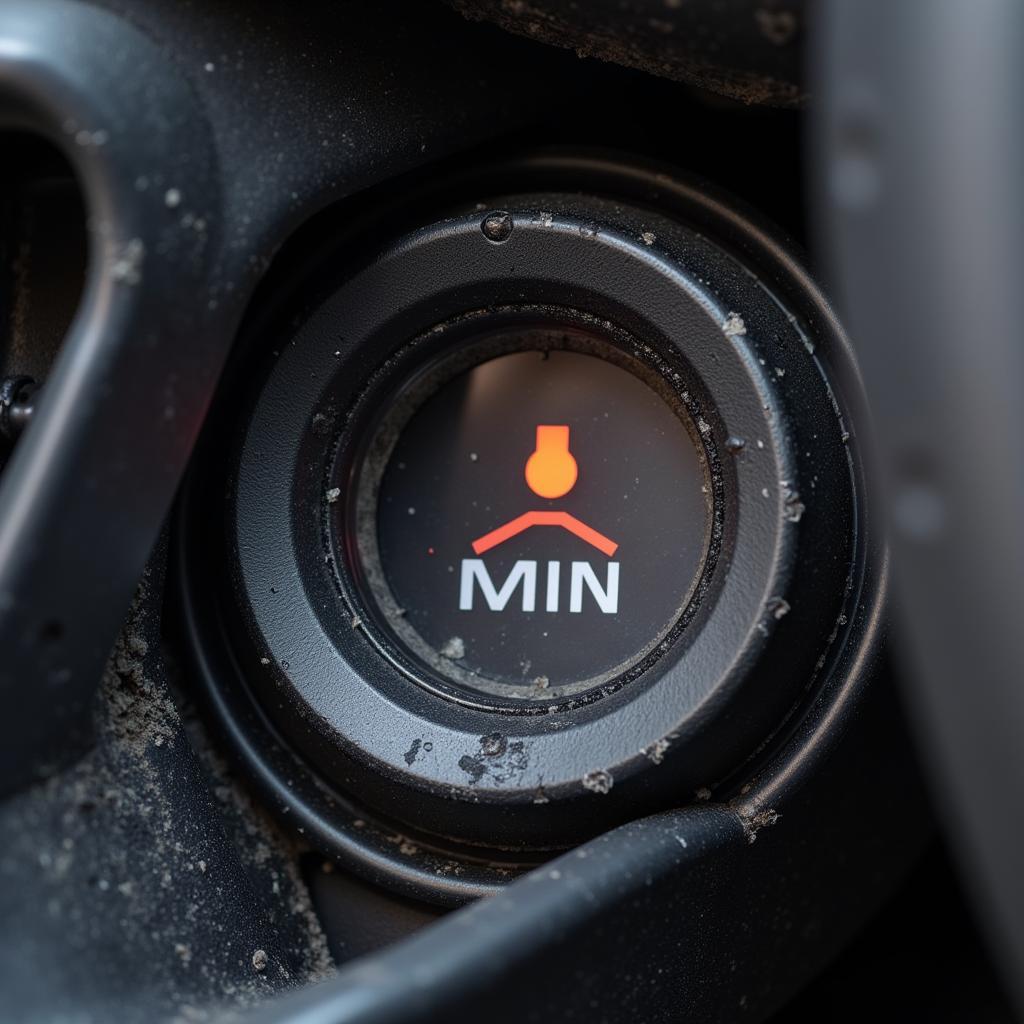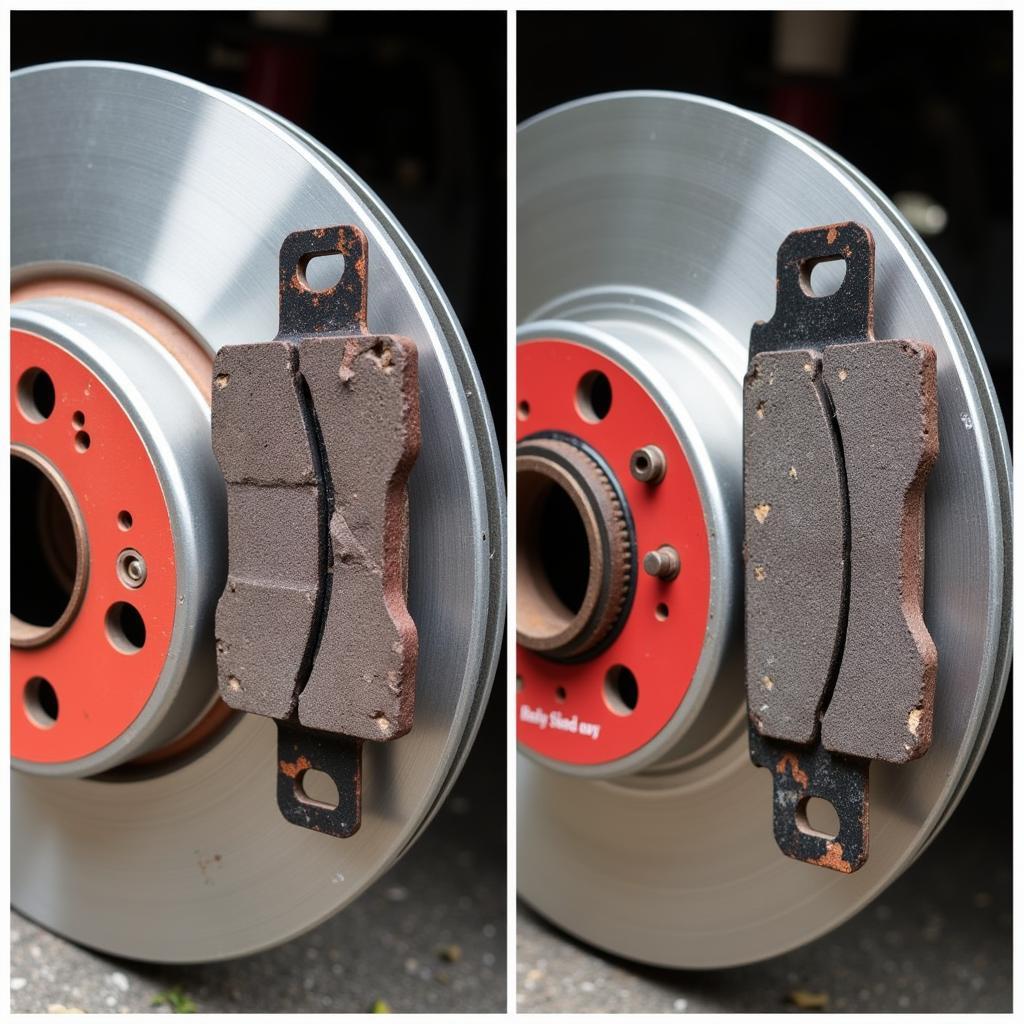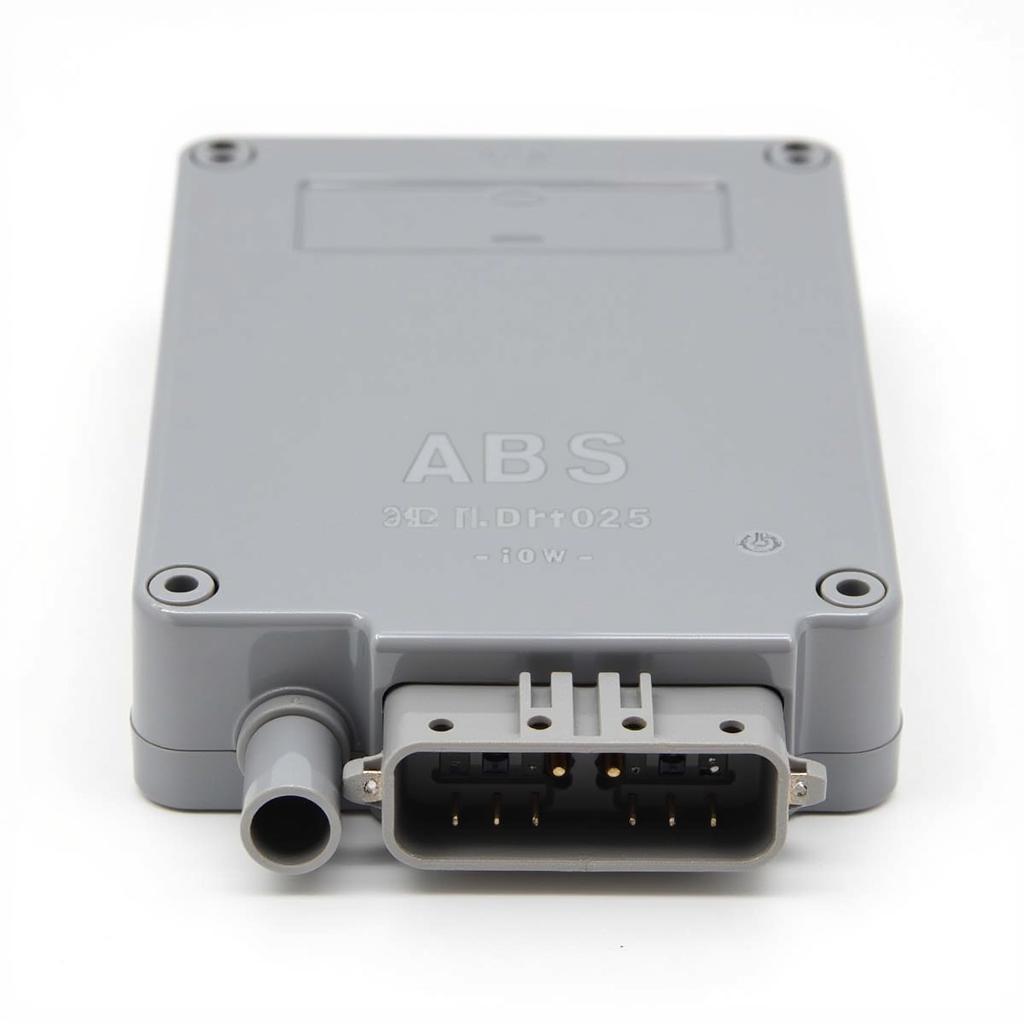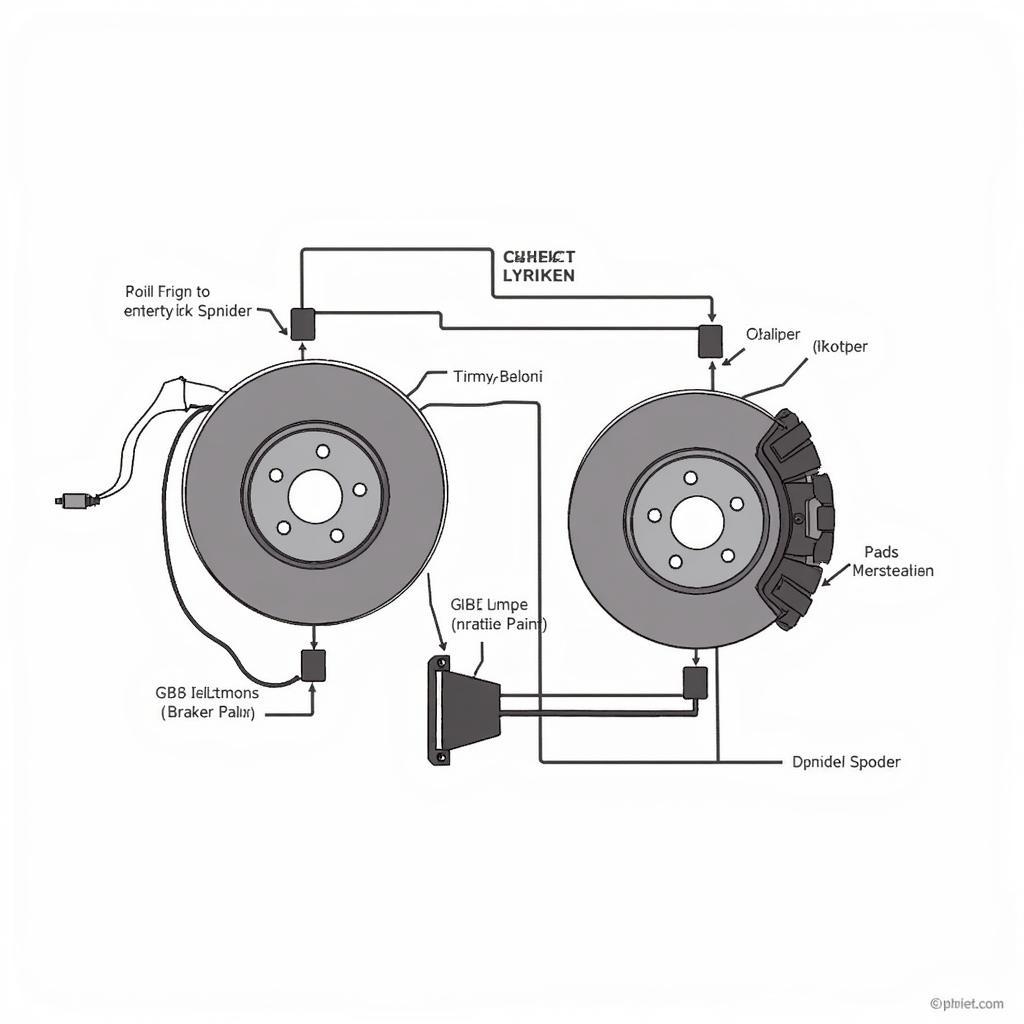A persistent brake warning light on your 2005 Ford F150 dashboard can be a cause for concern. This issue signals a potential problem with your truck’s braking system, requiring immediate attention to ensure your safety and prevent further damage. While several factors can trigger this warning, this guide will walk you through the common causes, troubleshooting steps, and possible solutions.
Understanding Your Ford F150’s Brake System
Before diving into the specifics, it’s essential to grasp the basics of your F150’s braking system. It comprises various components working in unison to slow down and stop your vehicle. These include:
- Brake Pedal: The physical lever you press to activate the braking system.
- Brake Booster: Amplifies the force you apply to the brake pedal, making braking easier.
- Master Cylinder: A hydraulic pump that pushes brake fluid through the brake lines when you press the pedal.
- Brake Lines: Carry the pressurized brake fluid from the master cylinder to the wheels.
- Brake Calipers and Wheel Cylinders: These components house the brake pads and shoes, respectively, clamping them onto the rotors or drums to create friction and slow down the wheels.
- Brake Fluid: A hydraulic fluid transmitting the force from the master cylinder to the calipers and wheel cylinders, enabling the braking action.
Common Reasons Your 2005 Ford F150 Brake Warning Light Stays On
Several factors can lead to a persistent brake warning light on your 2005 Ford F150. Identifying the root cause is crucial for effective troubleshooting. Here are some of the most common culprits:
1. Low Brake Fluid Level
 Low Brake Fluid Reservoir
Low Brake Fluid Reservoir
One of the most prevalent reasons for the brake warning light to illuminate is a low brake fluid level. Brake fluid naturally depletes over time due to wear and tear on the brake pads. If the fluid level drops below a certain point, the warning light activates to alert you.
How to Check:
- Locate the brake fluid reservoir under the hood.
- Check the fluid level against the “Min” and “Max” markings on the reservoir.
Solution: If the fluid level is low, add the correct type of brake fluid recommended for your 2005 Ford F150 until it reaches the “Max” mark.
2. Worn Brake Pads
 Worn Brake Pads and Rotor
Worn Brake Pads and Rotor
Brake pads are designed to wear down over time as they create friction against the rotors to stop your vehicle. When the brake pads wear thin, a sensor triggers the brake warning light on the dashboard. This sensor is designed to alert you before the pads wear down completely, preventing damage to the rotors.
How to Check:
- Inspect your brake pads visually. If you see less than ¼ inch of pad material, it’s time for a replacement.
Solution: Replace your brake pads immediately if they are worn. It’s best to replace all four brake pads simultaneously to ensure even braking performance.
3. Faulty Brake Light Switch
Your brake lights and the brake warning light often share a common switch. If this switch malfunctions, it can disrupt the circuit, leading to a continuously illuminated brake warning light, even if your brake fluid level and brake pads are in good condition.
How to Check:
The brake light switch requires testing with a multimeter or a circuit tester. If you’re not comfortable working with electrical components, it’s best to consult a qualified mechanic.
Solution: If the brake light switch is faulty, replacing it is a straightforward procedure.
4. ABS Issue
 ABS Control Module
ABS Control Module
The Anti-lock Braking System (ABS) is a safety feature that prevents your wheels from locking up during hard braking. A malfunctioning ABS system, often due to a faulty sensor or module, can trigger the brake warning light.
How to Check:
- Check for other warning lights: If the ABS warning light is also illuminated, it further points to an ABS-related issue.
- Listen for unusual noises: Unusual noises during braking, such as grinding or humming, can also indicate an ABS problem.
Solution: Diagnosing and repairing ABS issues can be complex and often require specialized equipment. It’s advisable to seek professional assistance from a qualified mechanic or dealership.
What to Do When Your 2005 Ford F150 Brake Warning Light Stays On
- Don’t Panic: While a persistent brake warning light is a serious matter, it doesn’t necessarily mean your brakes are about to fail.
- Pull Over Safely: If possible, pull over to a safe location and turn off your engine.
- Check the Brake Fluid Level: This is the easiest and quickest check you can perform yourself. If the fluid level is low, add the correct type of brake fluid.
- Inspect Your Brake Pads: If you’re comfortable doing so, visually check your brake pads for wear.
- Seek Professional Help: If the brake warning light persists after checking the fluid level and brake pads, or if you suspect an issue with the brake light switch or ABS system, it’s crucial to seek immediate assistance from a qualified mechanic.
Expert Insights
“Ignoring a persistent brake warning light can lead to costly repairs and compromise your safety,” says John Smith, a certified automotive technician with over 20 years of experience. “Addressing the issue promptly ensures your braking system operates optimally and keeps you safe on the road.”
Conclusion
A persistent brake warning light in your 2005 Ford F150 should never be ignored. Understanding the common causes and taking the necessary steps to diagnose and address the issue will ensure your safety and prevent further damage to your vehicle. Remember, when in doubt, always consult a qualified mechanic for a thorough inspection and professional repair.

